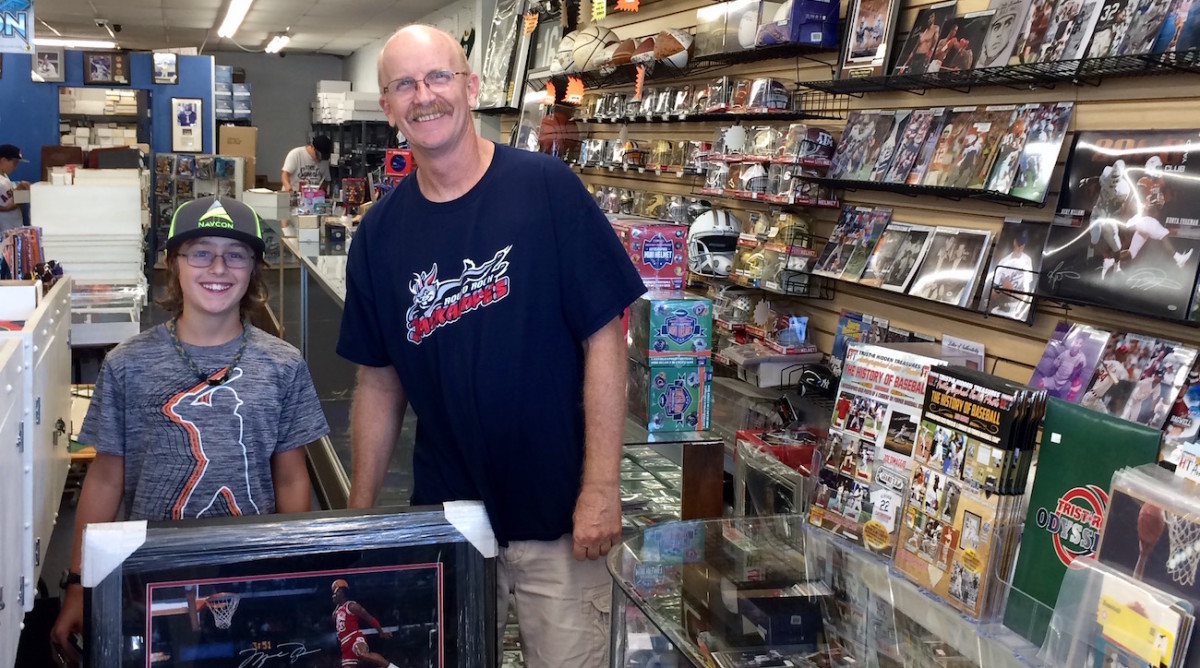Tips and Trivia About Collecting Baseball Cards

For generations, kids and adults have collected baseball cards, which have been around for almost as long as the sport has. National Baseball Card day is in August—many shops celebrated by handing out free trading cards on the 12th—so we talked to experts and researched just how this collectible has evolved over the years.
“It’s a great hobby and a great, fun way to enjoy baseball whenever you want,” said John Odell, a National Baseball Hall of Fame curator.
Bob Wilson, who works at Card Traders of Austin, gave some advice to kids starting their own collection: “Protect the cards,” he emphasized.
Wilson said that using plastic sleeves or card holders, both of which you can find at almost any store that sells trading cards, are essential to preserving your collection. He also advises not storing your cards under the bed or on top of a shelf where they can collect dust or get damaged easily. The cardboard that the cards are made of is very sensitive to liquids, so cards easily warp and become damaged.

Odell gave additional advice: “I recommend finding friends that you can trade with,” he said. Trading can build up your collection and help you get the cards you really want, including the players you look up to the most.
What will baseball cards look like in 10, 20, or even 30 years? It's crazy to think that such a small collectible would've been founded before the 20th century and still be popular today! Whether you're an all-out collector or an average fan, baseball card collecting is a fun passion because you can build up your collection card by card and create memories of trading and collecting your favorite players. The hobbt also allows you to experience baseball in a new way. Let’s see how far this pocket-sized memorabilia has come!
1860s: It was during this time that the first cards, which were used as advertisements, were printed, as the U.S was coming out of the Civil War and baseball’s popularity was rising.
1886: Goodwin & Co. created the first baseball cards, which came in cigarette boxes.
1909: The American Tobacco Company began creating cards featuring actors, actresses, singers, and athletes. This is the set that featured the most famous and valuable card, the T206 Honus Wagner card. Today it’s valued at over $2 million, as there are only 57 known in the world! Along with that set was also a very valuable card, the T206 Eddie Plank card that is almost as valuable today as the T206 Honus Wagner card because not very many were produced.
1920s: Following World War I, baseball card production soared but suddenly dropped toward the end of the decade. Not many were made during the mid-1920s until companies like York Caramel started including them with their products.
1930s: After having been mainly for adults, it was during the 1930s that they became popular with kids when cards were first put into packs of bubblegum. Card characteristics also changed about this time. Brief biographies of players were included on the back of the card as well as personal information such as hometown, birthday, and position.
Another valuable card Odell mentioned was the 1933 Goudey card of Nap Lajoie that was, or rather wasn’t, produced. Lajoie, a player and manager in Philadelphia and Cleveland, was admired by many fans. The truth is that that Goudey said they had made Lajoie cards; however, when superfans and collectors tried to complete their 1933 set, no matter how many packs of cards they bought, they couldn’t get Lajoie cards! Finally, after many frustrated collectors sent in letters about the card, Goudey printed a few Lajoie cards and sent them to the letter-writers.
1952: The first full 400-card set was designed and released by Sy Berger, a young war veteran and Topps worker who is also known as "the father of the modern baseball card." The set was also the first to include more detailed information like statistics, the team name, and team logo. It also contained the Mickey Mantle rookie card worth approximately $35,000 dollars today.
1990s: Baseball cards stopped coming with gum, and prices rose greatly. Bowman began putting a gloss on their cards, which was adopted by other companies such as Topps and Upper Deck soon after.
Early 2000s: Baseball cards began being graded by larger trading card companies around this time. Grading is the name of the process in which the cards are professionally examined and given a numerical grade based on their condition. Their rating is based on four categories: surface, corners, edges, and centering. Cards in exceptional condition are considered more valuable and will get a grade of 9.0 to 10.0.
2012: Topps created an app called Topps Bunt that allows card collector fans to trade online with other collectors.
Photographs by (from top): Kris Connor/Getty Images; Riley Zayas
